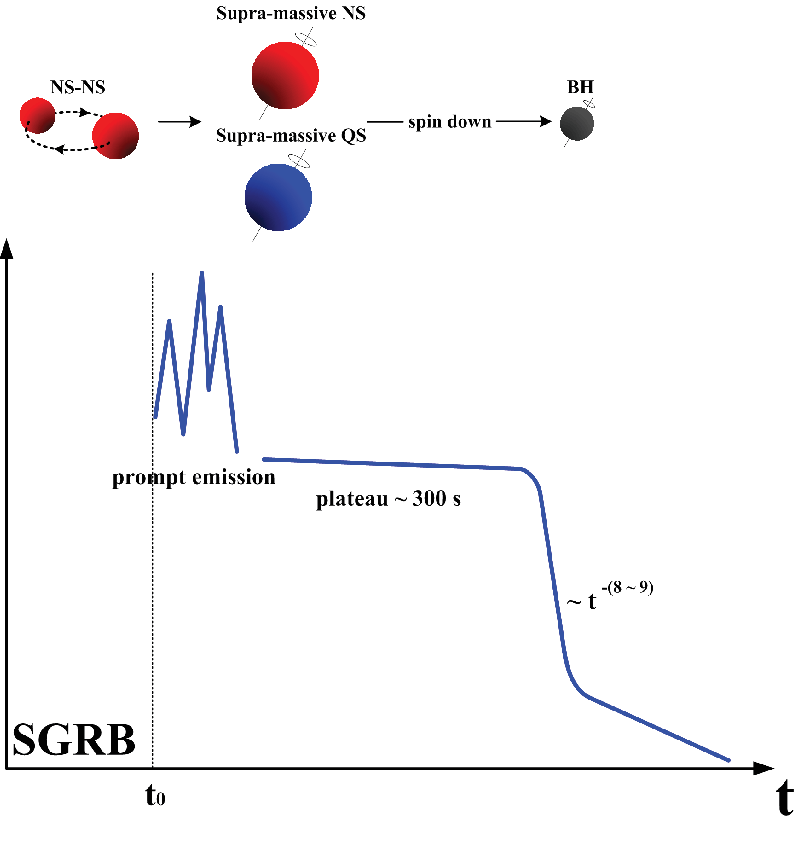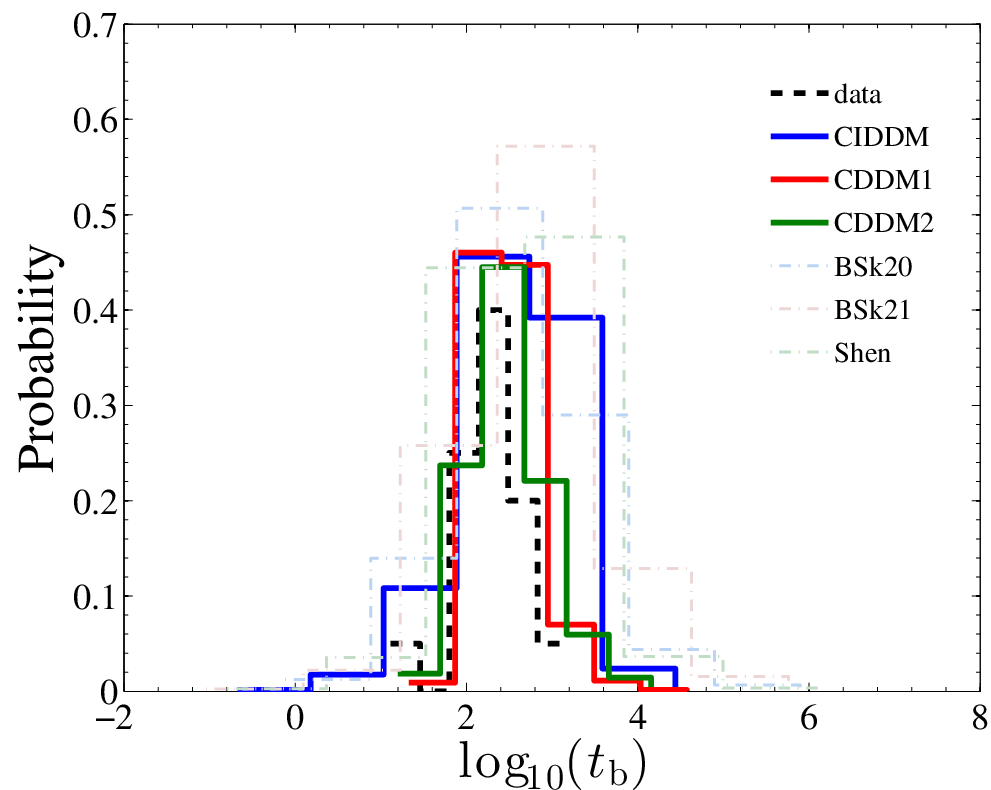A supramassive, strongly magnetized millisecond neutron star (NS) has been proposed to be the candidate central engine of at least some short gamma-ray bursts (SGRBs), based on the “internal plateau” commonly observed in the early x-ray afterglow. While a previous analysis shows a qualitative consistency between this suggestion and the Swift SGRB data, the distribution of observed break time tb is much narrower than the distribution of the collapse time of supramassive NSs for the several NS equations-of-state (EoSs) investigated.
Recently, a team of astronomers from Xiamen University, led by associate Professor Ang Li, study four recently constructed “unified” NS EoSs (BCPM, BSk20, BSk21, and Shen) as well as three developed strange quark star (QS) EoSs within the new confinement density-dependent mass (CDDM) model, labelled as CIDDM, CDDM1, and CDDM2. All the EoSs chosen here satisfy the recent observational constraints of the two massive pulsars of which the masses are precisely measured. They construct sequences of rigidly rotating NS/QS configurations with increasing spinning frequency f, from nonrotating (f=0) to the Keplerian frequency (f=fK), and provide convenient analytical parametrizations of the results. Assuming that the cosmological NS-NS merger systems have the same mass distribution as the Galactic NS-NS systems, they demonstrate that all except the BCPM NS EoS can reproduce the current 22% supramassive NS/QS fraction constraint as derived from the SGRB data. They simultaneously simulate the observed quantities (the break time tb, the break time luminosity Lb, and the total energy in the electromagnetic channel Etotal) of SGRBs and find that, while equally well reproducing other observational constraints, QS EoSs predict a much narrower tb distribution than that of the NS EoSs, better matching the data. They therefore suggest that the postmerger product of NS-NS mergers might be fast-rotating supramassive QSs rather than NSs.
This work has been accepted to publish on Physical Review D. For details, see 《Internal x-ray plateau in short GRBs: Signature of supramassive fast-rotating quark stars?》,Phys. Rev. D 94,083010 (2016)


Fig1: Pictorial representation of the model; Fig2: Simulated collapse time distributions with three unified
NS EoSs (BSk20,BSk21,Shen) and three QS EoSs (CIDDM,CDDM1,CDDM2),
as compared with the observed one(dashed curve).
